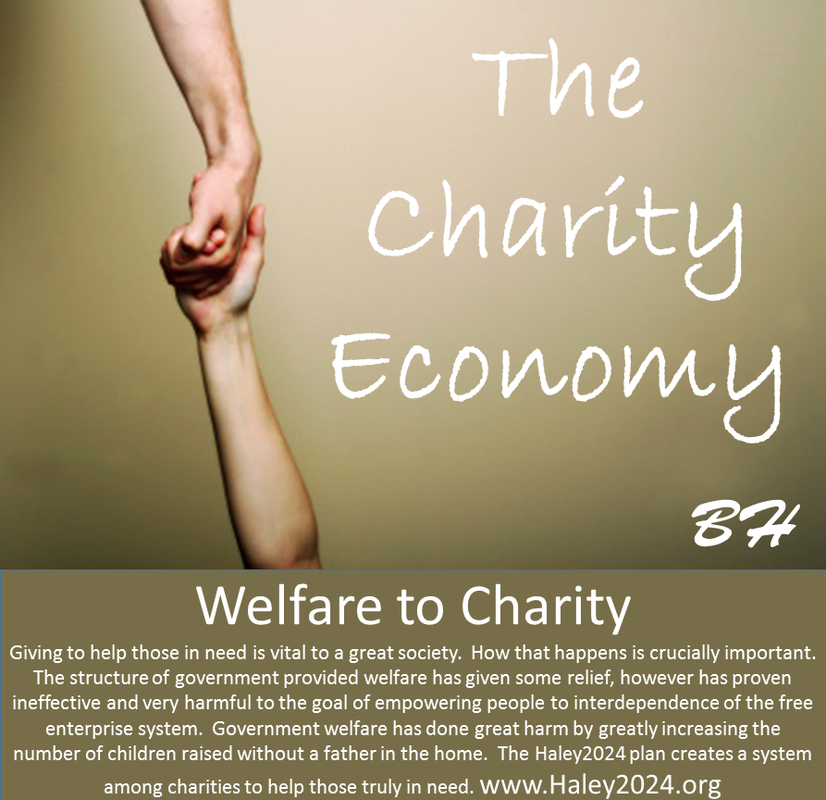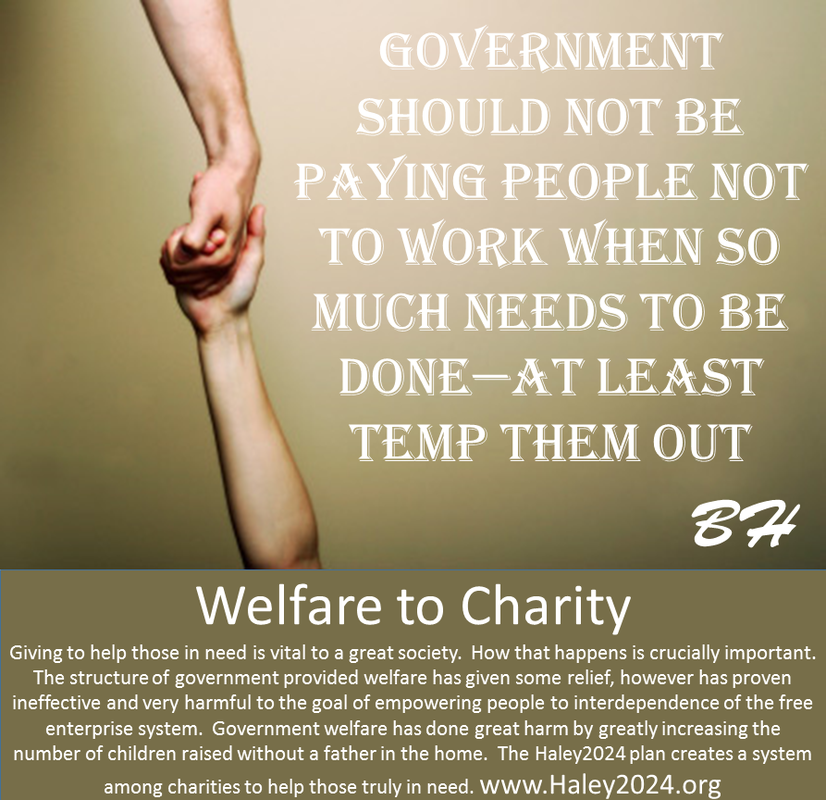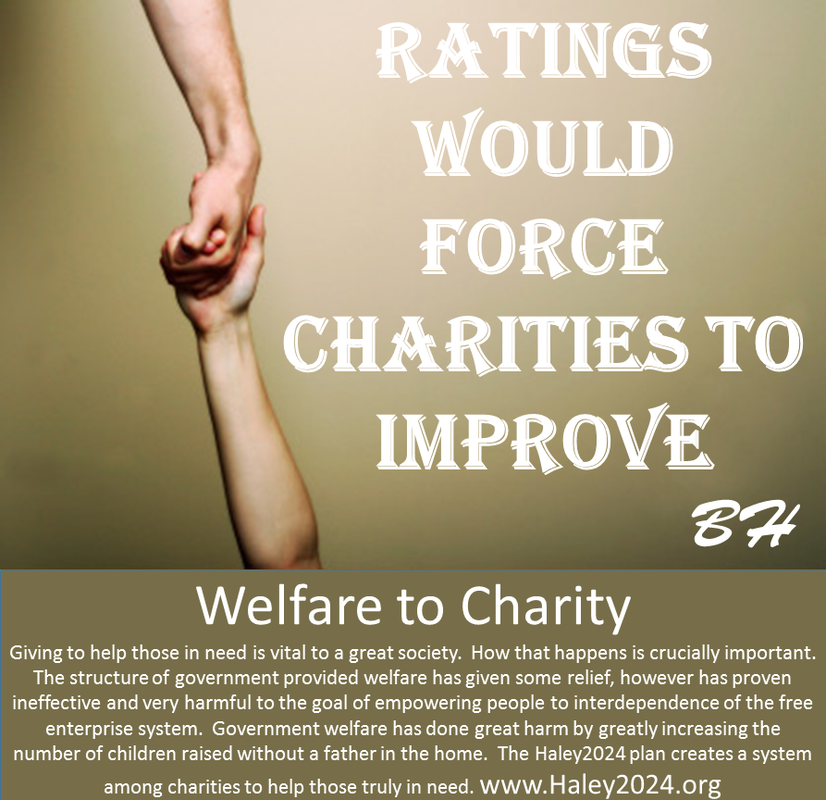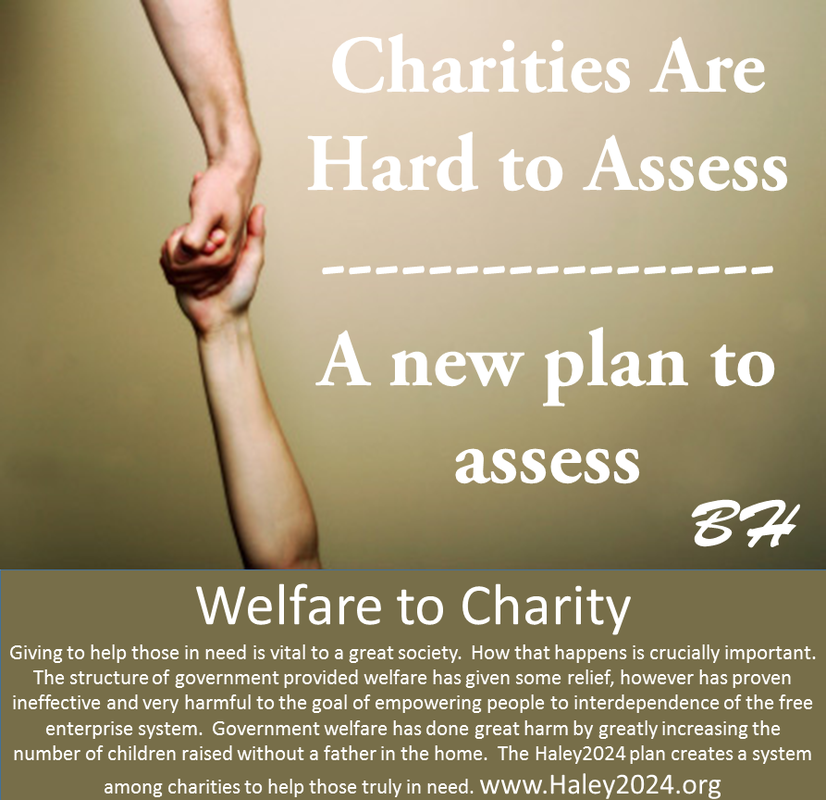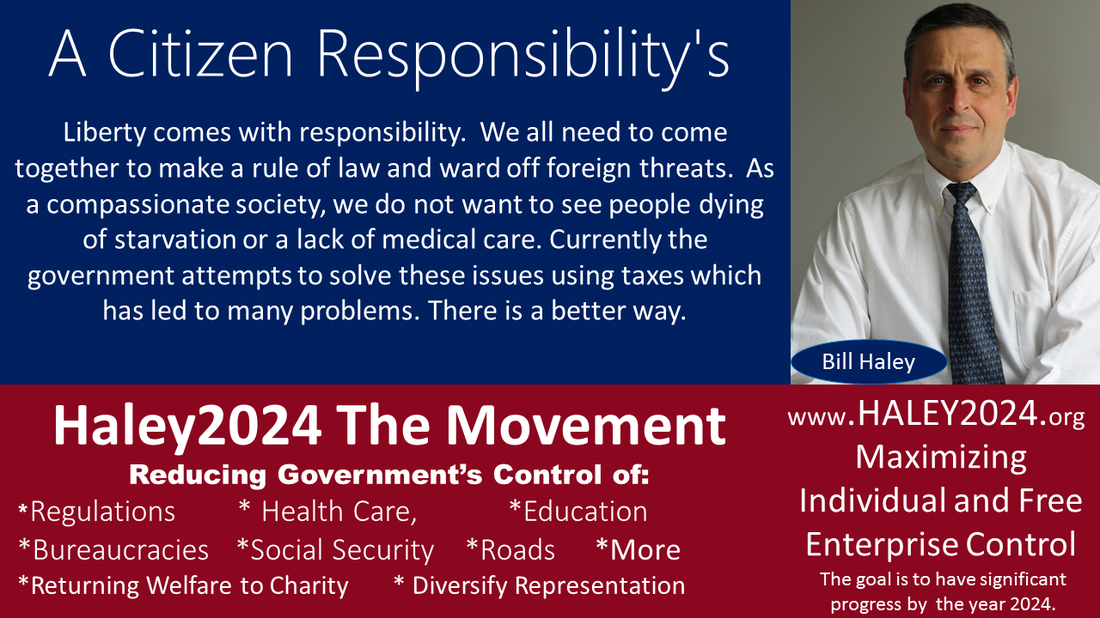| Every able body person needs to help with the public good of securing our freedom from foreign and domestic threats and creating a rule of law. Second as a compassion society, everyone should contribute to helping those most in need. On both fronts, there would be a 5% tax with a minimum of $1,500 (2015 dollars) on everyone 13 years of age and older. The minimum and possibly more than this minimum could be fulfilled with real labor from the individual. |
| Everyone would have the option to volunteer three hours per week, in which to satisfy the $1,500 minimum tax (150 hours a year). Wide latitude will be given to the military and first responders on how to best use volunteer hours. The $1,500 minimum charity requirement could also be satisfied with 150 volunteer hours. People could negotiate to do all there hours in rule of law or charity. |
| People could also work ahead in their productive years so as not have this requirement when elderly. people could do extra hours for extra consideration from the charity economy in their elder years, These hours would be monitored and rated by Competitive Regulatory Agencies (CRA’s), Charitable Distribution Associations (CDA’s) and Rating Agencies. Real and valuable labor will be ensured by CRA’s and CDA’s chasing the best ratings because citizens will demand highly rated organizations to donate, purchase, do business with or otherwise associate themselves with. |
| The youth will began their volunteer hours at the age of 13 with likely training, apprenticeship, and other business/volunteer models that also result in real help being done as one builds their human capital to be of greater help in the future. Some of the major fields would be nurse’s aide among other in the medical field. There would be police and fire ‘assistance’ course so volunteer hours in those fields would be of great help in the future. Military, forestry, among a wide variety of charity related fields would have training for the youth to have the much greater value in in volunteer hours in the future. |
| The elderly do lose some productive value with age, however there would be people working for CDA’s among many others that would specialize in fully utilizing the great value and wisdom of the elderly. One of the elderly’s greatest needs is to be ‘needed’ and they truly have much to give. Many elderly could be bused to a school to help teach children or teach those going through technical school from their life time of experience. Mentoring among other ways of instilling one’s human capital to the next generations is of great value. The rating system, being very dynamic, will understand the limitations of people with disabilities and rate accordingly to gain and optimize the value of volunteer hours. |
| Volunteering though one’s job could be a very highly rated endeavor if done right. People through their work place could do extra work without pay to fulfill their volunteer hour requirements. Often, one’s job is where they maximize their value in serving others. CRA’s in all sectors would be seeking high ratings on how they help in charity and ‘first responder’ endeavors. Whether your employer does direct work in these areas or just transfers the money earned to other endeavors, one’s workplace is where most people utilize their training and capital to best serve others. CRA’s, CDA’s among others will be very dynamic in these areas and requiring very dynamic rating agencies to fully realize the value being offered. |
| The greatest benefits of the two $1,500 minimums equaling $3,000 is the fact that everyone should contribute at least a minimum to the two greatest benefits, protection and charity. Second, this minimum also greatly reduces the percentage rate of the tax/ charitable donation needed to fulfil these two needs. Higher tax rates creates higher disincentives of creating income (serving others and creating jobs) in the first instance (Laffer Curve). |


